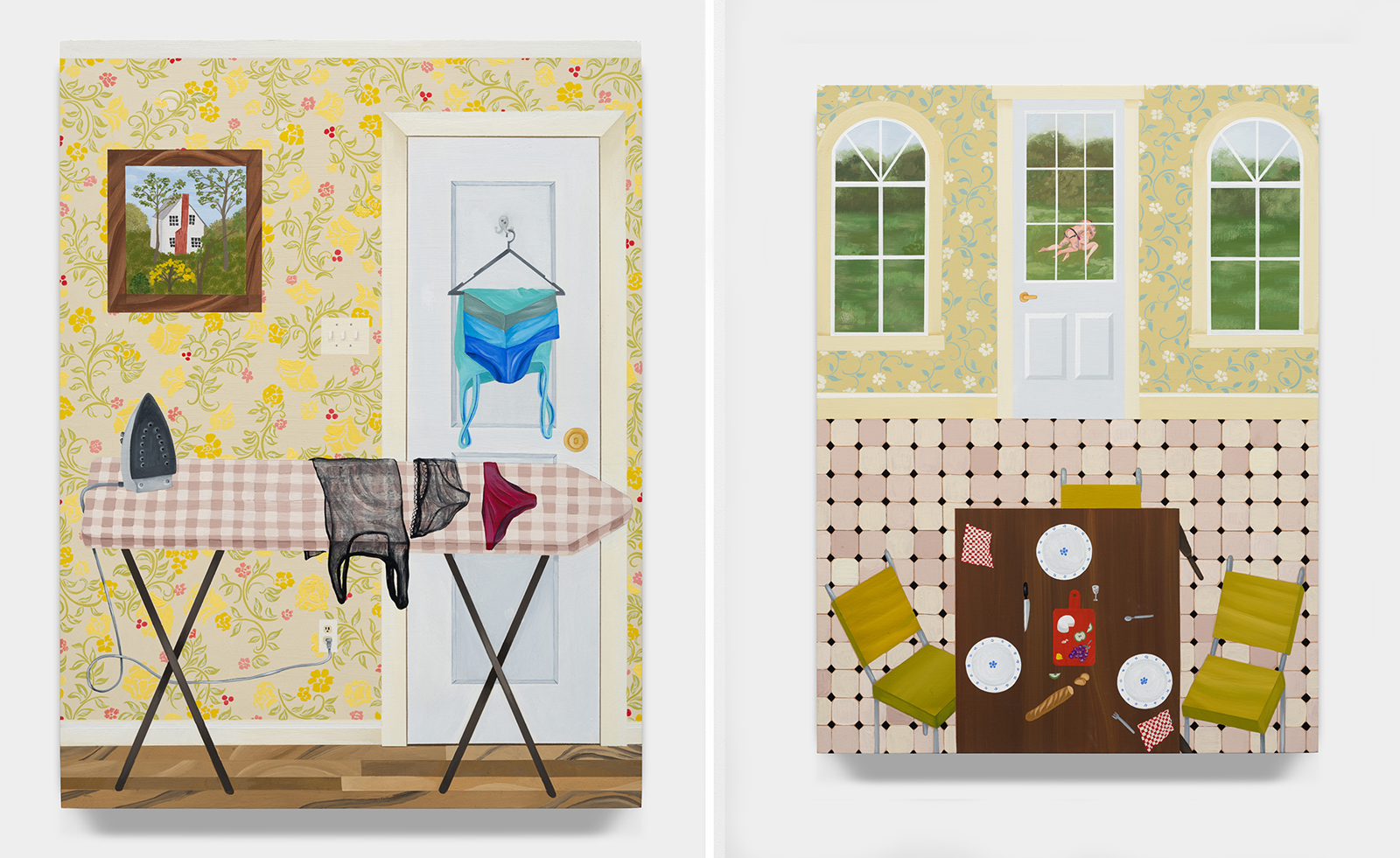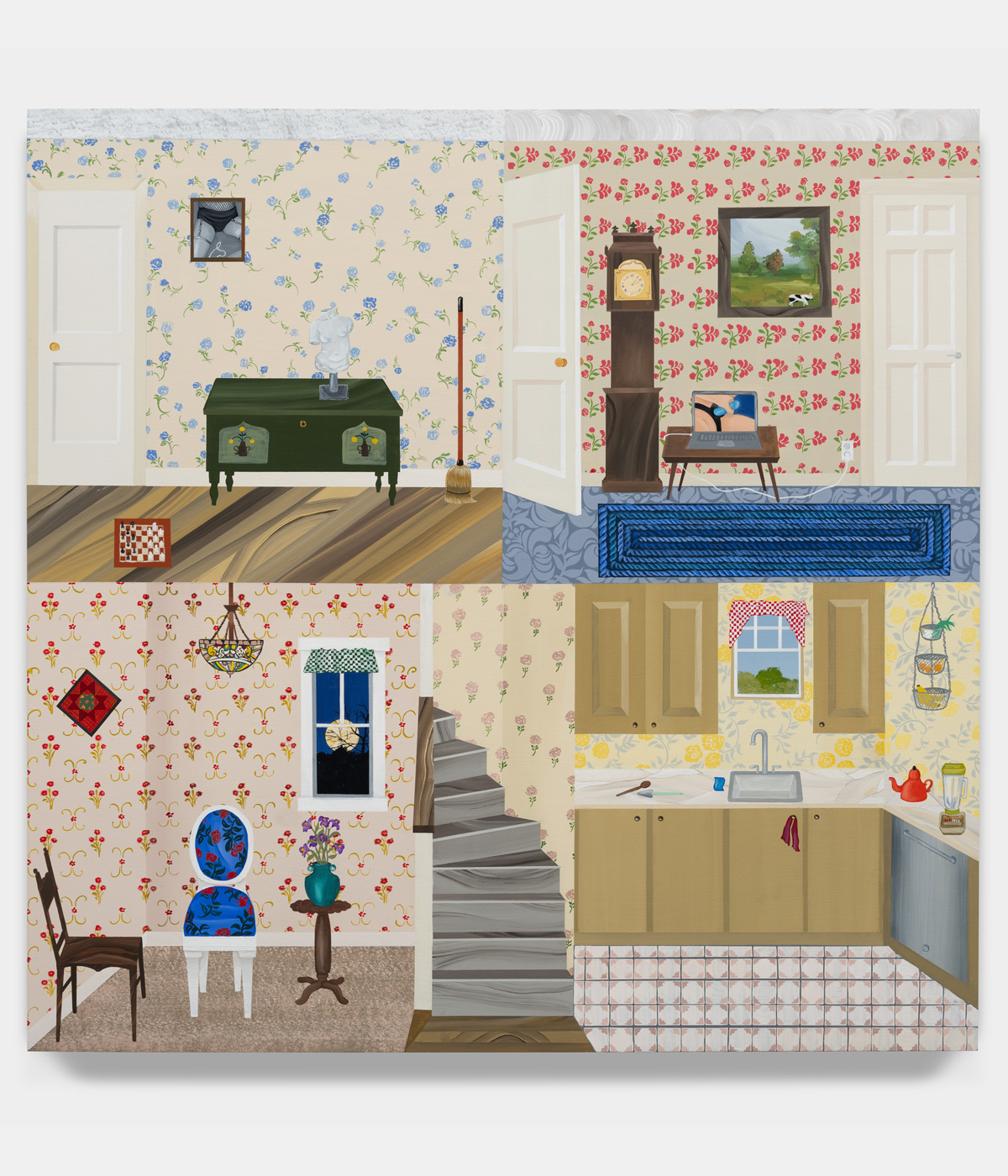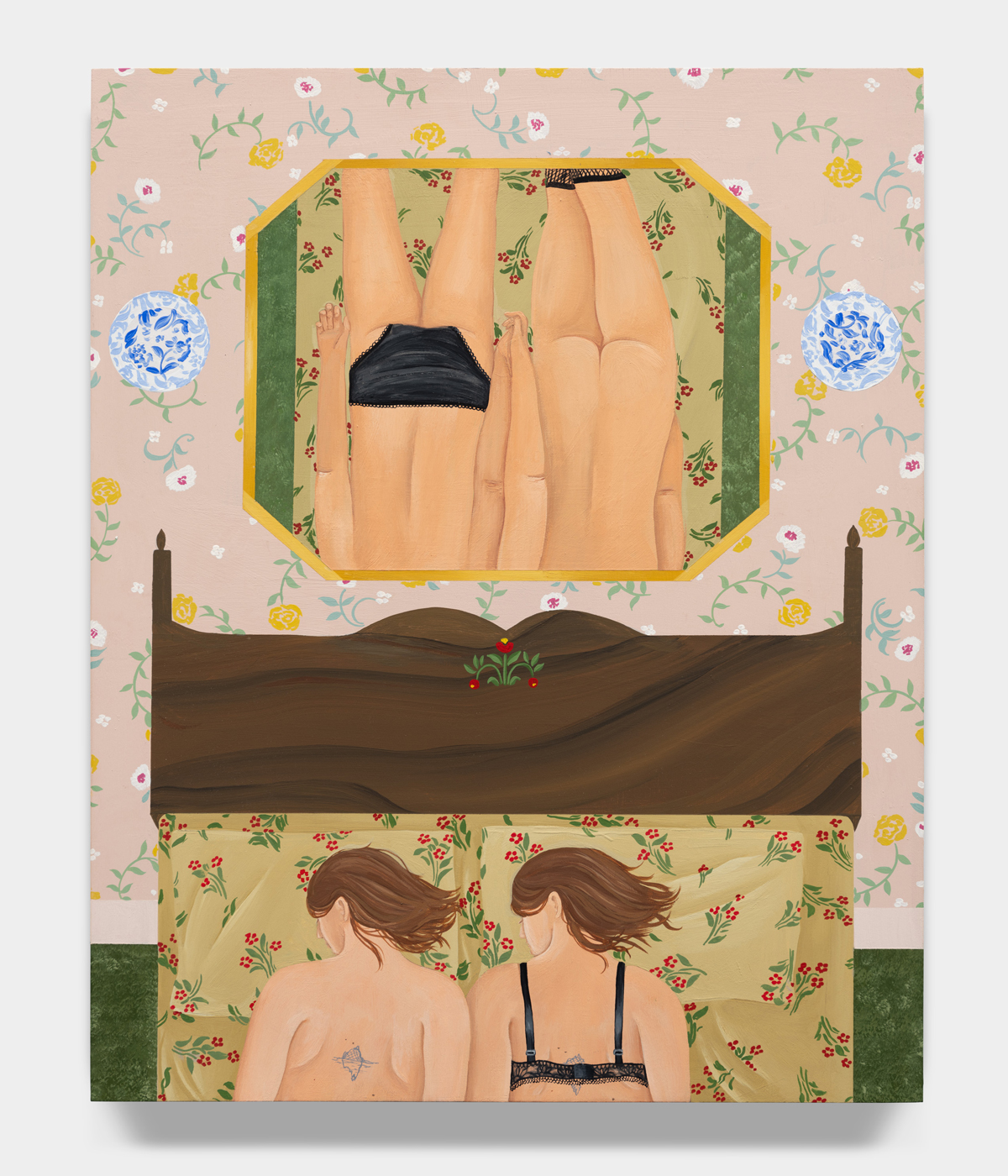
What lies beneath the surface of an apparently innocuous domestic environment? For Anne Buckwalter, an environment littered with the routines of its inhabitants is rich in intimate code. In her paintings, nothing is quite as it seems. Flattened perspectives skew traditional proportions, intertwining a fantastical element throughout considerations of queerness and sexuality in a happy marriage of mundanity and lust.
Interior spaces are synonymous with psychological spaces for Buckwalter, who draws on American folk art and Pennsylvania Dutch traditions – the latter a nod to her upbringing in rural Pennsylvania – for her richly drawn interiors. Look closer, and you spot the subversive details of a private life, in the blood stain on a mattress, the whip in the laundry room or the grass stains on knees.

‘I like to create spaces for lust and eroticism to exist alongside the mundane, hygienic, and wholesome’
Anne Buckwalter
‘I situate disparate objects together as a way of representing how we embody feelings, values, and desires that can be seen as incompatible with each other,’ Buckwalter says. ‘I’m particularly interested in how this relates to sexuality; I like to create spaces for lust and eroticism to exist alongside the mundane, hygienic, and wholesome. I think culturally we are conditioned to gravitate towards that which is binary or straightforward – we don’t have a lot of innate patience or compassion for murky grey areas. But I think it’s a universally and fundamentally human thing to be complicated, changeable, and ambivalent, and I feel compelled to embrace that in my work.’

The rooms in her paintings are drawn from a mix of memory and imagery from books, with Buckwalter allowing space for improvisation during the creation process. ‘I am usually most pleased with paintings that have something awkward, unresolved, or a little clumsy about them,’ she adds. ‘They feel the most true. For instance, in Grass Stains, there is a real nonsense of both time and space: the overalls in the lower right-hand corner are presumably the same garment that the figure is wearing outside the window in the upper left, but they are existing simultaneously in the same plane. And, the room is quite sparse – there is a rug on the floor and a painting on the wall, but no furniture. I had intended to include furniture but ended up liking the weirdness of having the composition sort of separated into four quadrants, so I left it as is. I think it is more successful this way, even though it is completely removed from reality; you would never stumble upon a room like this.’

Presented as cross-sections, the homes literally dissect traditional representations, questioning the relationship between domesticity and femininity. ‘Domestic spaces have been traditionally coded as feminine, and I’m interested in the relationship between interiors and the construction of feminine identity. I grew up experiencing a lot of shame and silence surrounding sex and reproductive health, the body, and queerness. These are the subjects I am now most drawn to and invested in exploring. I think investigating these themes in the context of rooms decorated like the spaces I was raised in is a way of reconciling my past and current identities. And, more broadly, I hope that my work can contribute to a larger conversation around reproductive rights, the liberation of the female body, and the normalisation of sexual expression.’
Anne Buckwalter's exhibition, 'I Will Clean the Closet, I Will Climb the Stairs,' is at San Francisco's Rebecca Camacho Presents until 2 November 2024









